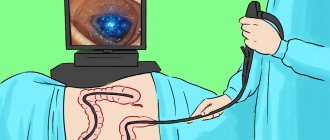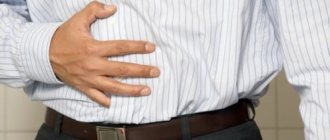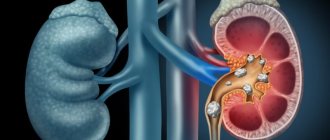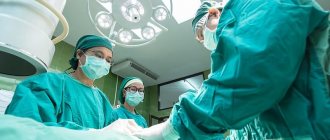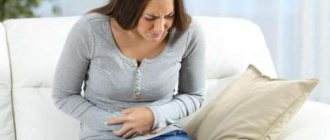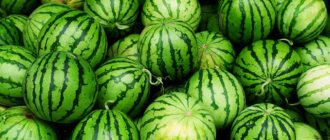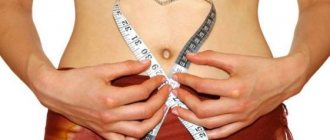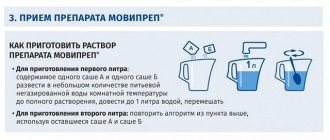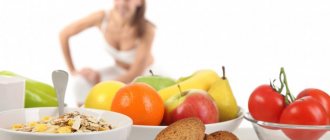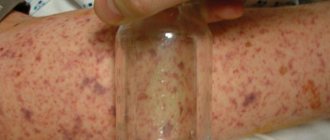To reduce pain, colonoscopy is often performed under general anesthesia or sedation. To prepare for the study, be sure to use a special slag-free diet, additional medication or enema cleansing of the intestines. However, even after a colonoscopy, especially after using anesthesia, it is important to follow a number of rules that will help the intestines to recover properly.
The importance of diet after colonoscopy
Before conducting an examination of the intestines, as is known, doctors already prescribe a strict diet. This diet is aimed at completely cleansing the intestinal walls and removing toxins.
In addition to the fact that after this diet, eating everything at once is harmful to the body, there are other important points why it is not recommended to eat all foods.
Complications after colonoscopy are possible in rare cases. However, in order to avoid various problems, it is important to follow the doctor's advice.
The procedure involves the introduction of a foreign body into the intestines, which can disrupt the microflora or lead to minor injuries to the mucous membrane. Therefore, food after the examination should not be rough or difficult to digest, and it must also help normalize the internal environment of the intestines.
It is strictly forbidden to consume fried and spicy foods; alcoholic drinks will also be inappropriate.
The load on housing and communal services should be reduced as much as possible immediately after a colonoscopy, and then you can gradually move on to your usual diet.
How to restore the intestines after a colonoscopy
Forced bowel cleansing before a colonoscopy procedure does not go unnoticed, especially if the patient did not follow the recommendations of a nutritionist. But even with proper planning of the diet and eating regimen, stool after colonoscopy can be problematic:
- liquid with normal or increased frequency;
- too hard;
- atypical, containing mucus and blood, etc.
Such problems are caused by the fact that after the examination, disturbances in the microflora and intestinal motility are observed.
You can restore your colon's ability to function normally through diet and moderate physical activity. Regarding the restoration of intestinal microflora after examination with a colonoscope, you will have to use probiotics and prebiotics. These are drugs that cultivate and maintain healthy intestinal microflora.
Important! The method of restoring microflora using foods rich in fiber is not used after colonoscopy, since dietary fiber provokes gas formation and can injure the already irritated mucous membrane.
We recommend reading: Heat rash in children, what it looks like, causes and how to treat it
A much more dangerous phenomenon is when black stool appears, indicating intestinal bleeding. It requires immediate medical intervention; hiding and ignoring such a symptom is life-threatening.
Authorized Products
The list of foods that are recommended to eat after a colonoscopy includes all food groups:
- Meat - lean veal, poultry fillet, lamb without lard. You can prepare light meat broths from them, or steam cutlets, meatballs, soufflés and casseroles from minced meat.
- Vegetables - potatoes, zucchini, pumpkin, carrots, beets, cauliflower, bell peppers. It is advisable to boil them, bake them or add them as a side dish to soups made with low-fat broth. It is advisable to refrain from eating raw vegetables, as they cause gases to form in the intestines.
- Fruits and berries - plums, peaches and apricots, watermelon and melon, apples, cranberries and lingonberries, currants. On the first day, it is better to prepare juices and fruit drinks from them, then they can be consumed fresh.
- Fish - pike perch, bream, pollock and flounder, pike, lean herring. They are steamed or baked in parchment. It is also allowed to prepare broths, cutlets, and soufflés from fish.
- Dairy products - low-fat cottage cheese, varenets, kefir, yogurt, low-fat sour cream. They are consumed with the addition of fruit or in pure form at breakfast or dinner, and on the first day and throughout the day.
- Bread and pastries - whole grain, bran bread, preferably slightly dried. For dessert you can eat biscuits and dry biscuits.
- Boiled and steamed eggs.
The listed foods in the diet after intestinal colonoscopy provide the nutritional value of the diet and are a source of fiber necessary for the proper functioning of the digestive tract.
Important! The preferred method of preparing food is boiling or stewing. If necessary, you can additionally chop or puree cooked dishes.
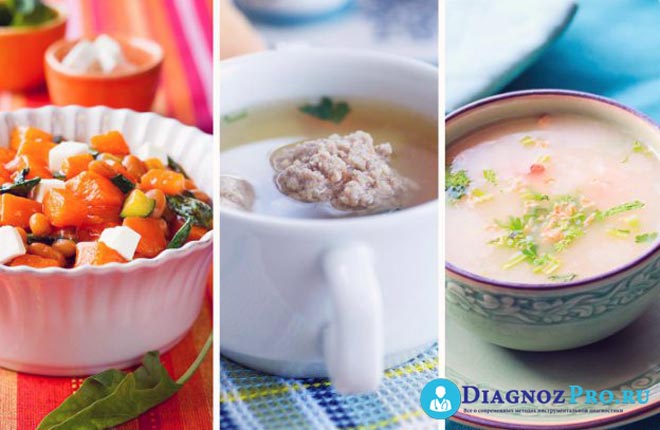
- “Linex” is a balanced pro- and prebiotic agent that can be used even before the appearance of unpleasant symptoms as a preventive measure;
- “Lactobacterin” is a product with live bacteria that helps restore microflora;
- “Bifidumbacterin” is another natural remedy with live bacteria that helps cope with the symptoms of dysbiosis;
- “Hilak Forte” is an organic property based on biosynthetic acid that supports beneficial intestinal microflora and promotes the removal of toxins from the body.
Nutritional features immediately after the study and the next day
After the manipulation, it is very important to assess the patient’s health status, age and general well-being. If after a colonoscopy a person feels unwell, drowsiness and apathy appear, then it is not recommended to eat at all. The same applies to recovery after a colonoscopy under anesthesia. Any food will only worsen the general condition.
If you are feeling well, you should pay attention to easily digestible protein products and soups. It is important to include vitamins and mineral complexes in the diet.
Among the recommended products, especially:
- vegetables and fruits (boiled, fresh, baked);
- cutlets made from minced fish or meat (ground several times);
- boiled eggs;
- fermented milk products, especially kefir, yogurt, cottage cheese, sour cream;
- soups with chicken broth or vegetable broth.
Especially recommended for drinking:
- a decoction of rose hips, lingonberries, cranberries (the drink saturates with vitamin C, increases the body's resistance, strengthens the immune system);
- jelly (suppresses appetite, saturates, helps remove excess fluid from the body);
- green tea;
- decoctions based on chamomile, sage, calendula.
After and the day after a colonoscopy, it is not recommended to eat complex carbohydrates, sausages, and smoked meats. You should not eat fatty and oily foods, fresh baked goods, and confectionery products. It is necessary to continue to eat crackers along with fresh bread and maintain an active drinking regime.
After colonoscopy, the first stool appears on the 3rd day, which is very important to monitor. The absence of stool for more than 4 days must be noted by the attending physician at the next examination.
To speed up the recovery process, it is necessary to take probiotic complexes that will help restore the intestinal microflora and improve digestive processes. Read more about restoring intestinal microflora after colonoscopy here.
Diet goals
Before a colonoscopy, the patient must adhere to a strict diet, which will clear the intestines of toxins. Also, during the event, damage to the intestinal walls cannot be ruled out, since a foreign object penetrates into it.
Against the background of such actions, the tissues of the colon weaken, which often leads to such consequences as:
- soreness;
- dizziness;
- increased gas formation;
- general weakness;
- decrease in pressure.
To avoid all possible complications, after a colonoscopy, the patient must adhere to a certain diet for several days. This will help restore the organ and ensure its normal functioning.
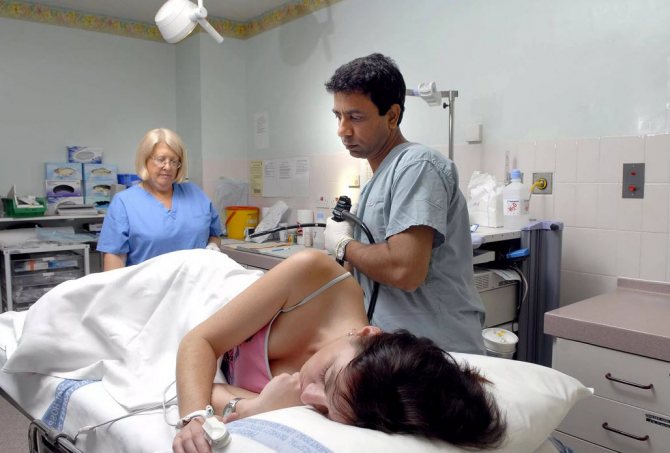
Basics of proper nutrition after the procedure
For proper and complete restoration of the intestines after an invasive examination, you must follow the advice of doctors and eat right. Foods that can be eaten after a colonoscopy and after how long are determined by the attending physician and nutritionist. Your doctor will tell you when you can return to your normal diet. The diet is developed based on the results of an examination or surgical intervention. It is required to follow basic nutritional rules after the procedure:
- Meals should be frequent and small. To restore the proper functioning of the digestive tract, it is necessary to develop it and monitor the movement of the food coma and intestinal motility. Usually the entire diet is divided into 5-7 doses with a break of 1.5-2 hours. Each serving is a total of 200-250 grams.
- Food should be easily digestible. Heavy foods are completely excluded from the diet for stable functioning of the intestinal tract and ease of evacuation.
- The diet should contain a large amount of vitamins and minerals. After the procedure of invasion of internal organs, the intestinal microflora is disrupted. For recovery, the supply of certain microelements is necessary for several days.
- Food should be liquid or easy to chew. Colonoscopy can be used for surgery. After surgery, the walls of the intestinal tract are weak and can be torn or injured by large and hard foods. Which, in turn, can lead to infection and internal bleeding.
- The food should be warm. The food temperature should not be lower than 15 degrees and not higher than 55-60 degrees. This temperature range promotes rapid healing and recovery. Exceeding the temperature threshold can lead to impaired peristalsis or burns of the area undergoing surgery.
- Mandatory intake of water 30-40 minutes before meals and 40-50 minutes after. You need to drink a glass of 200-250 ml. The water forms an accompanying bubble and further softens the food. This promotes the rapid passage of food coma through the gastrointestinal tract and allows you to get rid of constipation. This side effect often accompanies a colonoscopy procedure.
- Food should not be washed down with water immediately. Excessive amounts of water can block the secretion of gastric juices. Severe dilution of food and fullness of the stomach can lead to the formation of gases and severely stretch the intestinal walls. The presence of a large amount of water can cause suture rupture or disruption of the entire intestinal tract.
Authorized products
The patient's diet after the bowel examination procedure should consist of the right foods.
After diagnosis, light and nutritious foods and dishes are allowed:
- Soups. Light soups with a small amount of sea or river fish are allowed. Vitamins and phosphorus contained in fish bones and meat have a positive effect on peristalsis and healing.
- Vegetable broths. Boiled vegetables are a source of vitamins and essential microelements during the healing process and restoration of functions. They are easily digestible products and significantly reduce the likelihood of constipation.
- Eggs and protein foods. Protein is the main source of muscle tissue in the large and small intestines. The patient is recommended to eat soft-boiled eggs or an omelet cooked in a steam bath every day. Poached eggs are also allowed.
- Steamed fish dishes. Sea fish meat is useful and necessary for restoring microflora. Fish contains vitamins A, D, E, F and Omega 3 acids.
- Carbohydrate porridges. Oatmeal, rice, buckwheat, semolina allow you to develop the damaged part of the intestine and promote recovery after colonoscopy. Prepared exclusively with water. Milk should be excluded during the cooking process.
- Steamed vegetable stew. Significantly increases the range of vitamins obtained. Allows you to develop the stomach and intestines after the pre-procedure diet.
- Fermented milk products with low fat content. Ryazhenka, kefir, yogurt, low-fat cottage cheese provide the body with calcium and potassium for recovery. These products help strengthen the intestinal walls and restore microflora.
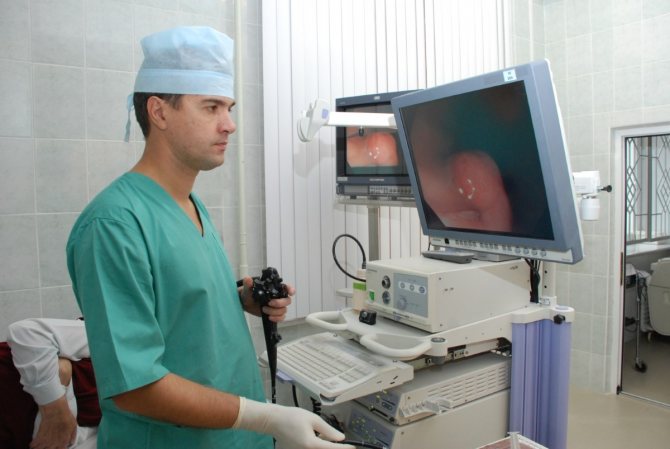
- Infusion or fresh juice of dried fruits. While retaining its beneficial qualities, fresh juice does not harm the intestines after a colonoscopy. You should drink after eating. Significantly increases the release of toxins from the body and prevents constipation.
- Infusions of forest berries. Abundantly replenish the lack of vitamins and microelements.
- Herbal tea, compote, jelly. By maintaining a temperature of +-60 degrees, these drinks will help restore peristalsis and intestinal muscle tissue.
- Marmalade, honey, marshmallows. Light, sweet foods help replenish the lack of fat tissue around the small and large intestine after an invasive test.
- Rye and grain bread. Must be either softened in water or chewed thoroughly before swallowing. Rich source of carbohydrates and healthy grains.
Prohibited Products
You should not add foods to your diet after intestinal colonoscopy that could harm it or cause complications.
After the procedure and until the intestinal tract is completely restored, the following foods and dishes are prohibited for consumption:
- Grilled meat. Tough and fibrous foods can harm the intestines during the recovery period.
- Fried fish. Any sharp object can cause harm and provoke an inflammatory process. It makes it difficult for food to move through the gastrointestinal tract and can lead to constipation or diarrhea.
- Pickles and marinades. The aggressive environment of pickles of any type is an irritant for the microflora disturbed by colonoscopy. May cause inflammation and acute infection. The intestines will take longer to recover when consumed.
- Smoked products and sausage. Heavy food. Cannot be completely softened mechanically. Gastric juice is secreted in large quantities. Moving through the intestines, such food acts as an irritant and can be dangerous for the patient.
- Canned foods. Heavy food takes a long time to digest. Provokes a large secretion of gastric juice. May cause an infection in the intestines.
- Whole grain porridge. Due to the presence of whole grains, it is not completely digested. May cause constipation and volvulus.
- Beans, corn, chickpeas, lentils. It is not digested and goes intact through the intestines. May cause harm to the damaged part of the gastrointestinal tract and cause general malaise.
- Confectionery and baked goods. The presence of large amounts of sugar and solid parts has a negative impact on the intestines and makes it difficult to recover after a colonoscopy.
- Pasta. They are made mainly from hard grains. Difficult to digest and can cause constipation.
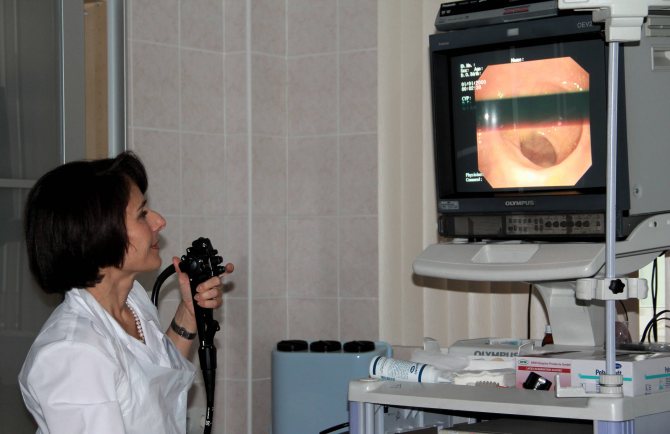
- Onion, radish, garlic. Spicy and aggressive food. Negatively affects peristalsis and the mucous membrane of the large and small intestine. Complicates the evacuation process and complicates recovery.
- Mushrooms in any form. They are difficult to digest and have a fibrous structure. They negatively affect digestion and the movement of masses in the intestines.
- Alcohol. Prohibited during recovery processes in the intestines. Alcohol is a solvent; it destroys the gastrointestinal mucosa and can dramatically worsen the patient’s condition. There may be difficulty urinating.
- Fried egg. It has a large number of sharp and solid particles that are difficult to digest. May cause irritation, infection and constipation.
- Freshly ground coffee and products containing cocoa beans. Prohibited in any form during the recovery period. It is difficult to remove from the body and has a negative effect on the mucous membrane. May cause constipation or volvulus.
- Spicy and fatty dishes. During the recovery process, hard-to-digest foods can cause constipation or volvulus. It disrupts peristalsis and inhibits the mucous membrane.
What to do if you experience constipation after a colonoscopy
Short-term constipation (up to 1-2 days) does not require special action; this is a completely normal phenomenon after the endoscopic procedure. If there is a longer absence of the urge to defecate, it is necessary to take special measures to improve intestinal motility. These include:
- Drinking plenty of water (2-3 liters daily).
- Moderate physical activity.
- The right diet.
- Taking laxatives.
Forlax, Fortrans and other similar products are best suited as laxatives. It is important to consider that these drugs are contraindicated on the first day after the procedure. They can cause intestinal atony. After 2-3 days from the moment of examination, their use is completely safe.
Complications after the procedure
Modern bowel screening is considered relatively safe, but problems do sometimes occur. Complications are usually minor, but require proper solutions.
Symptoms of violations may be as follows:
- bloating. After some time, the air that entered the intestines after the colonoscopy will come out, and the problem will resolve itself;
- feces with blood. May occur due to injury to the intestinal mucosa;
- lower abdominal pain. Usually occurs if intestinal polyps or inflamed areas were affected during the procedure;
- abdominal discomfort. A common situation that occurs due to intestinal irritation;
- constipation or too loose stools. The problem arises due to a violation of the microflora.
Self-medication in such cases is unacceptable. A doctor's help is necessary, especially if there is an additional increase in body temperature and other alarming symptoms.
Only a specialist will always take the right measures and prescribe proper nutrition to eliminate the unpleasant situation.

Features of the chair
If you follow all the rules of nutrition and diet, the patient’s usual stool should appear on the second or third day after the colonoscopy. The presence of fiber in the diet affects the appearance of stool. If there is enough of it, the stool will be normalized within one or two days. It happens that the patient cannot go to the toilet and this causes anxiety. This is a consequence of invasion.
If, in preparation for an invasive intervention, the patient was prescribed laxatives, the patient may experience diarrhea. Taking laxatives or performing enemas without a doctor's prescription is strictly prohibited.
The autonomic nervous system may react to the procedure with diarrhea and bloating. Such consequences do not provide reasons for adjusting the diet or prescribing medications.
To assess the proper functioning of the gastrointestinal tract, you will need to submit urine and feces for analysis after a colonoscopy.
Nutrition after colonoscopy of the lower intestine should be balanced and dietary. To prevent overeating, the patient must gradually increase portions and add foods that were prohibited during the diet.
The importance of diet after colonoscopy
Basics of proper nutrition after the procedure
How to eat after colonoscopy under anesthesia?
We recommend reading: A child’s scalp is peeling: reasons
Means for normalizing the environment in the intestines
Possible complications during colonoscopy
For what symptoms should you consult a doctor?
- Breakfast: thin porridge, jelly.
- Second breakfast: compote.
- Lunch: vegetable broth.
- Afternoon snack: yogurt.
- Snack: banana and kefir.
- Dinner: stew of stewed vegetables.
Sample menu
While telling the patient how to eat properly, the specialist also draws up a sample menu for the week. The diet for 7 days is presented in the table below.
| Monday | Tuesday | Wednesday | Thursday | Friday | Saturday | Sunday | |
| Breakfast | Low fat cottage cheese | Buckwheat porridge, rosehip decoction | Oatmeal, natural juice | Zucchini casserole | Buckwheat, boiled turkey, green tea | Muesli | Cottage cheese |
| Snack | Boiled egg | Curd mass with the addition of dried apricots | Fish soufflé | Yogurt | Cottage cheese and fruits | Cheesecakes, tea | Boiled egg |
| Dinner | Fish broth, boiled chicken meat | Vegetable soup, rice porridge and cutlet cooked in a steam bath | Chicken broth, vegetable casserole, compote | Vegetable puree soup, steamed meatballs | Fish broth, beet salad, puree | Chicken broth, buckwheat porridge, boiled fish | Vegetable soup, pilaf with veal, berry juice |
| Afternoon snack | Yogurt | Dried fruits | Natural kefir | Apple baked in the oven | Skimmed milk | Yogurt | Ryazhenka |
| Dinner | Rice | Broccoli casserole, green tea | Omelet and fresh tomato | Curd soufflé | Vegetable casserole | Fish cutlet, zucchini puree | Vegetable casserole with meat |
Despite the fact that colonoscopy is a minimally invasive procedure, it requires compliance with certain recommendations not only before the procedure, but also after it. To avoid complications and normalize the functioning of the intestinal tract as quickly as possible, you should not neglect the nutritional advice given by your doctor.
SOURCES: https://hromosoma.com/kolonoskopija/pitanie-posle-kolonoskopii-kishechnika-26634/ https://onkologia.ru/diagnostika/prochie-metody-diagnostiki/pitanie-posle-kolonoskopii-kishechnika/ https:// vospaleniekishechnika.life/diagnostika/pitanie-posle-kolonoskopii-kishechnika.html
Preparing for the study
The safety and highest information content of colonoscopy with intestinal biopsy can only be guaranteed with high-quality preparation. It is important that the organ being examined is as clean as possible, and the concern for this lies with the patient himself, who must approach the issue of preparation very responsibly.
Before a colonoscopy you will need to:
- Carry out cleansing enemas;
- Prepare the intestines using special preparations (fortrans, forject);
- Follow a diet for a week before the test.
Diet is the first measure for quality bowel preparation. The subject will need to exclude from the diet foods that cause constipation and gas formation - confectionery and bakery products, chocolate, legumes, fresh vegetables and fruits, carbonated drinks, coffee. It is better to avoid spicy, fried foods and smoked foods that irritate the mucous membranes. Food should be light and affordable, preferably steamed or stewed.
A day before the scheduled procedure, special medications are prescribed that help remove contents and gases from the intestines. They are sold in a regular pharmacy; they are sachets of powder that dissolve in water and drink according to the instructions. The patient will have to drink several liters of this solution per day, but will have to give up their usual meals. To reduce gas formation, espumisan or its analogues are additionally prescribed. It is advisable that the intestines be empty at the time of endoscopic examination.
If the preparation is carried out with cleansing preparations, there is no need to use enemas, which are uncomfortable for most patients. However, enemas are still used if other methods are unavailable for some reason.
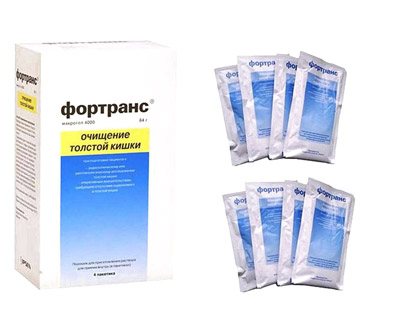
Fortrans is considered the most common and effective drug for cleansing the intestines. Experts say that even a single use of it has the same effect as a three-time enema. It is especially important that such cleansing can be done independently and at home.
The amount of Fortrans is calculated based on the weight of the subject, with a liter of the drug per 20 kilograms of weight. You should drink about a glass every 20 minutes. You should not rush, otherwise vomiting and abdominal pain may occur. The first appointment should be no later than 18 hours before the study, the last - 3 hours.
A biopsy of the small intestine is performed during fibrogastroduodenoscopy, so the preparation will be somewhat different: diet the day before, a ban on eating on the day of the study, sedatives. The small intestine is long, has a relatively narrow lumen, and is tortuous, so only its initial part, the duodenum, can be examined with an endoscope. Further promotion of the toolkit is considered dangerous.
